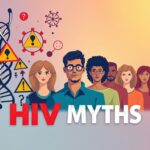Sexually Transmitted Fungal Infection: Causes, Symptoms, and Treatment
A recent publication in the Morbidity and Mortality Weekly Report highlights four US cases of an emerging sexually transmitted fungal infection caused by Trichophyton mentagrophytes type VII (TMVII). This disease is characterized by genital tinea, or ringworm, and has been identified in specific populations.

We are witnessing a growing concern with TMVII cases reported in patients who have had contact with infected individuals, often through sexual contact. As this is a relatively new and emerging issue, healthcare providers and the public need to be aware of the risks and consequences.
We will explore the causes, symptoms, diagnosis, treatment options, and prevention strategies for this condition, emphasizing the importance of early detection and proper treatment.
Key Takeaways
- A new fungal infection caused by Trichophyton mentagrophytes type VII is emerging in the US.
- The infection is primarily associated with genital tinea and is transmitted through sexual contact.
- Specific populations are at higher risk, including men who have sex with men.
- Early detection and treatment are crucial to prevent complications and further transmission.
- Awareness among healthcare providers and the public is key to managing this emerging health concern.
- Proper medical intervention can effectively treat the infection.
- Sexually Transmitted Diseases in Nursing Homes
Emerging Threat: Recent Cases of Sexually Transmitted Fungal Infections in the US
The US is witnessing a concerning trend with the emergence of sexually transmitted fungal infections, prompting a closer look at the causes and implications. We are seeing a rise in cases that highlight the need for increased awareness and understanding of this issue.
First US Cases Reported in 2023
A case report published in JAMA Dermatology brought to light the first instances of sexually transmitted fungal infections in the US in 2023. The report detailed the case of a New York man in his 30s who developed tinea on his groin, genitalia, arms, and legs after traveling to Europe (specifically England and Greece) and California. This case underscores the global nature of health issues and how international travel can play a significant role in the spread of infections.
We observe that the individual had multiple male sex partners during his travels, and he also visited a sauna before the onset of his symptoms. Notably, none of his sexual partners reported similar symptoms. This case highlights the complex interplay between travel, sexual contact, and the transmission of fungal infections.
Connection to International Travel and Sexual Contact
The connection between international travel, sexual contact, and the transmission of fungal infections is becoming increasingly evident. TMVII infections have been reported in individuals who had contact with sex workers in Southeast Asia and among men who have sex with men (MSM) in France. Our analysis of epidemiological patterns reveals a clear link between travel to certain regions and the spread of TMVII infections.
To better understand the patterns of transmission, let’s examine the data in the following table:
| Region | Reported Cases | Primary Mode of Transmission |
|---|---|---|
| Europe (England and Greece) | Multiple | Sexual Contact |
| Southeast Asia | Several | Contact with Sex Workers |
| US (New York) | Few | Sexual Contact among MSM |
We note that certain behaviors during travel, such as visiting saunas or having multiple sexual partners, may increase the risk of exposure to TMVII infections. Understanding these international connections is crucial for public health officials to track and respond to emerging infectious threats effectively.
By analyzing these patterns and connections, we can better prepare for and respond to the emerging threat of sexually transmitted fungal infections in the US.
Understanding Sexually Transmitted Fungal Infections
A new challenge in the realm of sexually transmitted infections (STIs) is the rise of fungal infections. These infections are caused by fungi that are transmitted through sexual contact, presenting a unique set of diagnostic and treatment challenges for healthcare providers.
What is Trichophyton Mentagrophytes Type VII (TMVII)?
Trichophyton mentagrophytes Type VII (TMVII) is a specific strain of fungus that has been identified as a cause of sexually transmitted fungal infections. TMVII is part of a broader group of dermatophytes that can cause skin infections. Recent cases in the US have highlighted the need for awareness about this particular strain, its transmission, and its impact on public health.
TMVII is notable for its resistance to certain antifungal treatments, making it a concern for dermatologists and healthcare providers. The emergence of TMVII and similar strains underscores the importance of proper diagnosis and treatment protocols.
Difference Between TMVII and Other Fungal Infections
TMVII differs from other common fungal skin infections, such as jock itch, athlete’s foot, and ringworm, in its transmission route and clinical presentation. Unlike these infections, which are typically spread through direct contact with contaminated surfaces or personal items, TMVII is transmitted through sexual contact.
| Fungal Infection | Transmission Route | Commonly Affected Areas | Resistance Patterns |
|---|---|---|---|
| TMVII | Sexual contact | Genital areas | Resistant to first-line antifungals |
| Athlete’s Foot | Direct contact with contaminated surfaces | Feet | Varies |
| Jock Itch | Direct contact with contaminated surfaces or personal items | Groin area | Varies |
| Ringworm | Direct contact with infected skin or contaminated surfaces | Various body parts | Varies |
As shown in the table, TMVII has distinct characteristics compared to other fungal infections, emphasizing the need for accurate diagnosis and tailored treatment approaches.

Causes and Transmission of Sexually Transmitted Fungal Infections
The emergence of TMVII as a sexually transmitted infection (STI) has prompted a closer look at its causes and transmission dynamics. Understanding how TMVII spreads is crucial for developing effective prevention and treatment strategies.
How TMVII Spreads Through Sexual Contact
TMVII infections have been reported in individuals who have had sexual contact with others carrying the infection. The fungus can spread through skin-to-skin contact during sexual activities. This mode of transmission is particularly concerning as it can lead to the spread of the infection among sexual partners.
Certain sexual practices may increase the risk of transmission. For instance, having multiple sexual partners or engaging in activities that cause skin friction or minor trauma can facilitate the spread of TMVII. The infection can manifest in various parts of the body, making it essential to practice safe sex and be aware of the risks associated with certain behaviors.

High-Risk Populations and Behaviors
Current epidemiological data suggest that certain populations are at a higher risk for TMVII infections. Men who have sex with men (MSM) and individuals who have contact with sex workers are among the groups identified as being at higher risk. International travel, particularly to regions like Southeast Asia where TMVII is more prevalent, is also a significant risk factor.
Additionally, individuals who frequent communal facilities such as saunas, spas, or gyms may have an increased exposure risk due to shared surfaces and skin-to-skin contact. Immunocompromised individuals may be at a higher risk for more severe or persistent infections if exposed. Understanding these risk factors is crucial for healthcare providers to identify patients who might benefit from targeted screening and prevention counseling.
Recognizing the Symptoms and Diagnosis
Recent cases of TMVII in the US underscore the importance of recognizing the symptoms and diagnosis of this infection. As TMVII continues to emerge as a sexually transmitted fungal infection, healthcare providers must be aware of its clinical presentation to provide accurate diagnoses and effective treatment.
Common Symptoms and Affected Areas
TMVII infections often manifest with symptoms that can be mistaken for other common skin conditions. Patients typically present with itchy, ring-shaped lesions in the genital and buttock areas. According to senior study author John Zampella, MD, “Since patients are often reluctant to discuss genital problems, physicians need to directly ask about rashes around the groin and buttocks, especially for those who are sexually active, have recently traveled abroad, and report itchy areas elsewhere on the body.”
The affected areas can vary, but the infection tends to target the groin and surrounding regions. Awareness of these symptoms is crucial for early detection and treatment.

Diagnostic Methods and Testing
Diagnosing TMVII involves a combination of clinical evaluation and laboratory testing. Healthcare providers must consider the patient’s sexual history, travel history, and the presence of characteristic skin lesions. Laboratory confirmation is often necessary to distinguish TMVII from other fungal infections or skin conditions.
- Clinical examination to identify characteristic ring-shaped lesions
- Laboratory tests, including culture and PCR, to confirm the presence of TMVII
- Detailed patient history to assess risk factors and potential exposures
Distinguishing from Other Skin Conditions
TMVII can be differentiated from other sexually transmitted infections and skin conditions through a combination of clinical presentation, laboratory testing, and patient history. Conditions such as psoriasis, eczema, and contact dermatitis may present similarly, but TMVII has distinct characteristics, including its ring-shaped appearance and response to antifungal treatments.
Accurate diagnosis is critical to prevent misdiagnosis and inappropriate treatment, which can lead to prolonged infection and potential complications.
Treatment Options and Prevention Strategies
Addressing the rising concern of TMVII, we explore the available treatment options and prevention strategies to combat this sexually transmitted fungal infection. The authors of recent reports emphasize the need for awareness and proactive measures among healthcare providers and the public.
Antifungal Medications and Treatment Duration
TMVII infection is typically treated with antifungal medications. The duration of treatment can vary depending on the severity of the infection and the individual’s response to the medication. Healthcare providers may prescribe oral antifungals, and in some cases, topical treatments may be recommended.
Dealing with Antifungal Resistance
The rise of antifungal resistance is a concern in treating TMVII. Public health surveillance and monitoring antifungal susceptibility are crucial in managing and preventing the spread of resistant strains. This involves regular testing and updating treatment guidelines as necessary.
Prevention Recommendations for At-Risk Individuals
Prevention is key, especially for individuals at higher risk, such as those with multiple sexual partners or who travel to regions where TMVII is more common. Recommendations include practicing safer sex, avoiding sexual contact when skin lesions are present, and maintaining good hygiene practices.

| Prevention Strategy | Description | Effectiveness |
|---|---|---|
| Safer Sex Practices | Using barriers like condoms during sexual contact | Partial Protection |
| Avoiding Sexual Contact with Lesions | Avoiding sexual activity when either partner has active skin lesions | Highly Effective |
| Good Hygiene Practices | Thorough washing after sexual activity and avoiding sharing personal items | Moderately Effective |
In Conclusion
Our examination of TMVII infections reveals that while they present a new challenge, they can be effectively managed with the right approach. The recent emergence of sexually transmitted fungal infections, particularly TMVII, in the US has highlighted the need for awareness and vigilance among healthcare providers and the public.
The symptoms of TMVII infection, which can cause lesions on the genitals, buttocks, face, trunk, or extremities, especially after new sexual contacts or international travel, should not be overlooked. Prompt diagnosis through appropriate testing is crucial, as these infections may be resistant to first-line treatments and require specialized approaches.
Healthcare providers play a vital role in staying informed about emerging infectious disease threats and maintaining a high index of suspicion when evaluating patients with unusual skin manifestations. Public health surveillance, healthcare provider and patient education, and increased access to dermatophyte identification and antifungal susceptibility testing are key to detecting, monitoring, and preventing the spread of TMVII.
To address this emerging health concern, we recommend that individuals, healthcare providers, and public health authorities work together through awareness, education, appropriate testing, and preventive measures. The authors of recent reports emphasize that advising patients with TMVII infection about avoiding skin-to-skin contact with affected areas is crucial in preventing further transmission.
By understanding the causes, recognizing the symptoms, and implementing effective treatment and prevention strategies, we can collectively mitigate the impact of sexually transmitted fungal infections. Ongoing surveillance and monitoring of resistance patterns will be essential in managing these infections effectively.












